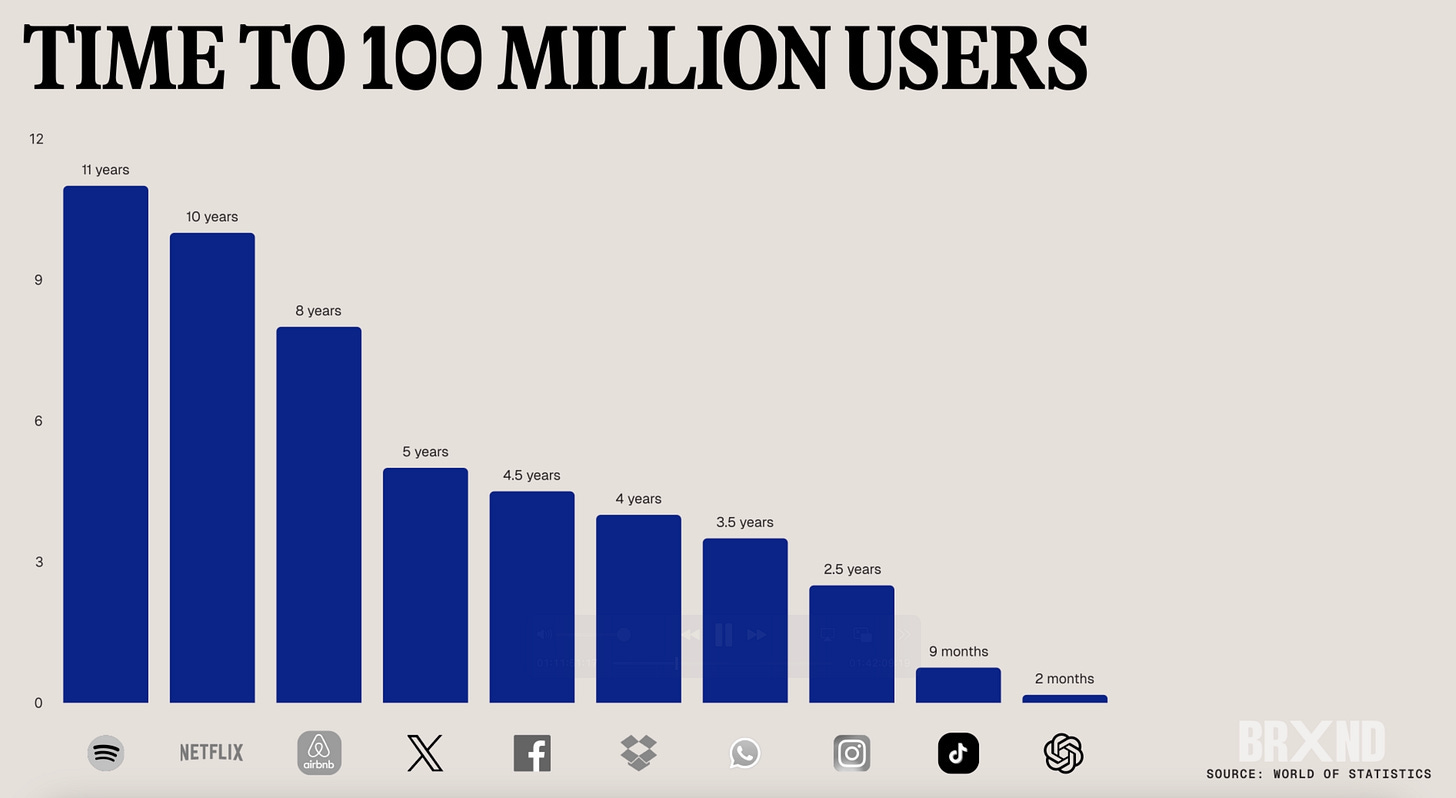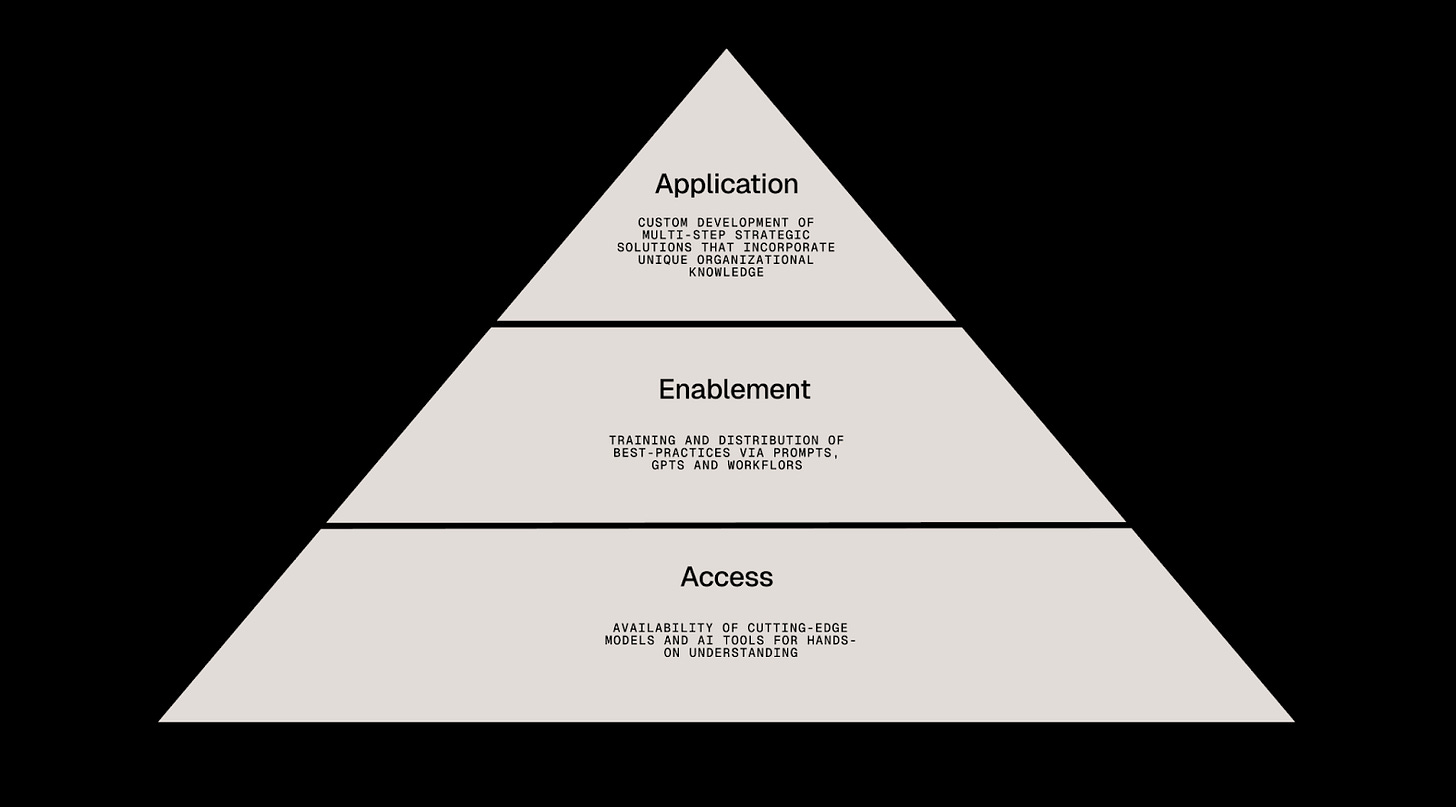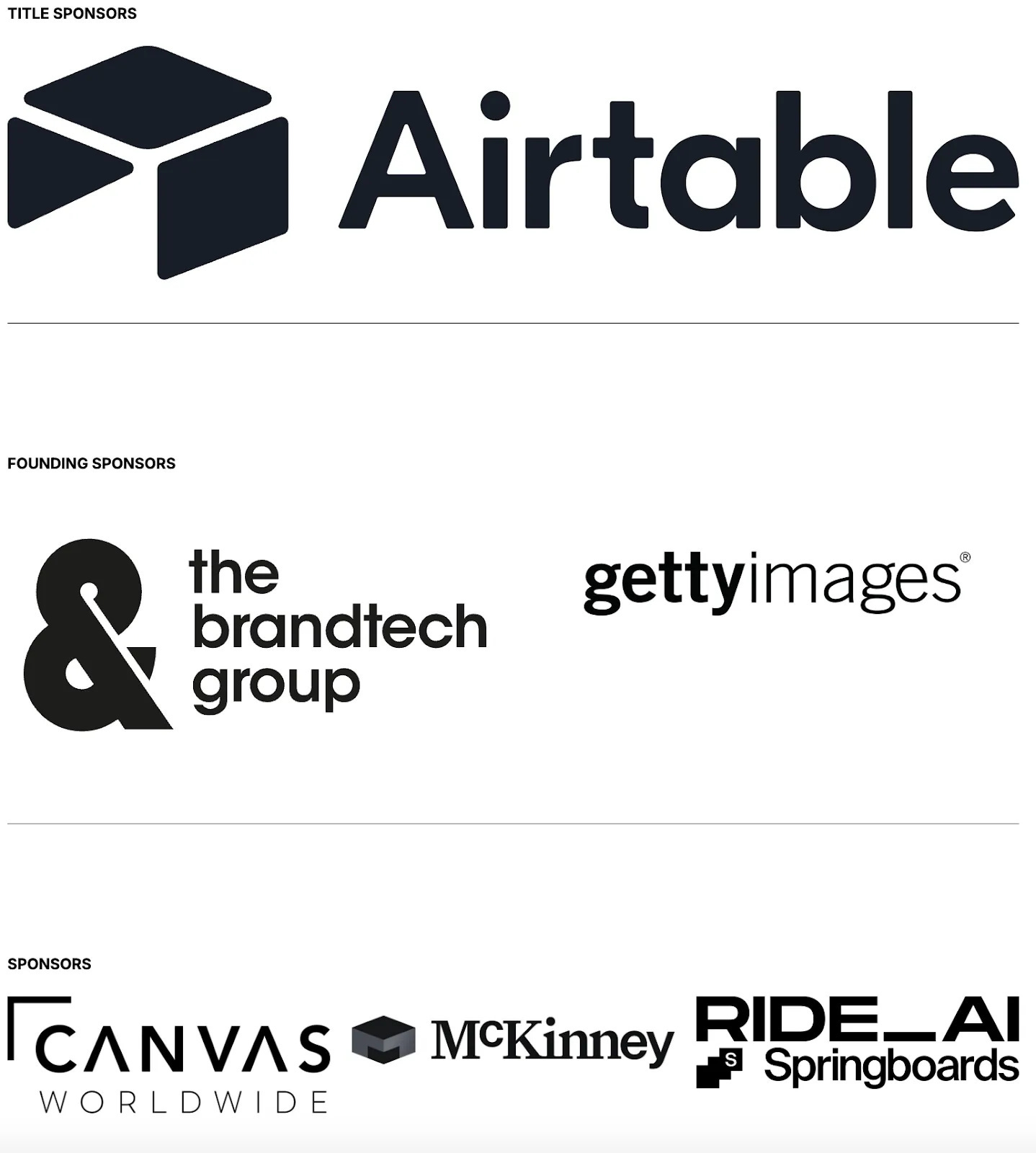BRXND LA 2025 Recap // Sabotaging the Sabotage // BRXND Dispatch vol. 70
Next up: BRXND NYC on 9/18.
You’re getting this email as a subscriber to the BRXND Dispatch, a newsletter at the intersection of marketing and AI.
Luke here. Last week marked the inaugural West Coast edition of the BRXND Marketing X AI Conference in LA, and it was fantastic. A big thank you to this year’s sponsors and attendees!
As a first-time visitor and AI “latecomer,” I was struck by the atmosphere of humility and curiosity. From large brands to early adopters, everyone came ready to learn. The experience was a good reminder that this technology is still young (we’re all AI “toddlers,” as Amazon’s Mike Houston put it), and the possibilities are both vast and unknown. In contrast to the overconfidence and hype (or doomerism) that pervades much of the AI discourse today, I found the honesty on display to be incredibly refreshing.
While the exploration of trending topics—from the rise of DeepSeek to the outlook for agents—was consistently insightful, the real highlights for me were the practical conversations about how AI is creating tangible value in marketing and advertising today. If you missed the event, don’t worry; all the talks will be on YouTube soon.
I’m going to devote this newsletter to covering Noah’s opening remarks because they were laser-focused on one of the biggest challenges I heard from marketers at the event: How organizations can effectively implement AI by working within existing structures rather than trying to break them down.
But first, exciting news: BRXND NYC is returning for its third year on September 18, 2025. Like our previous events, we’re focusing on what’s actually working in AI for brands and marketing—less speculation about the future and more real applications and tools being used today.
For a taste of what to expect, head to our site and scroll down to see a list of brands, agencies, and technologists who’ve graced our stage in the past.
Tickets are now available, and newsletter subscribers can get 10% off this week only.
Interested in being part of the event in a bigger way? We're currently accepting applications for sponsors and speakers—just fill out one of those forms to let us know how you’d like to participate. We’d love to have you join us in New York this fall.
Back to BRXND LA. Throughout the day, one question kept bubbling up in nearly every conversation: How do we actually roll up our sleeves and get our hands dirty with AI in ways that matter? Not the theoretical stuff but the practical, sometimes messy, work of finding new ways to put these tools to use.
So, it was fitting that Noah began the conference with a presentation about what happens when bleeding-edge technology meets institutional inertia head-on.
While AI adoption has been historically fast, none of us would say it has been fully rolled out in enterprises. This isn’t because the technology isn’t ready. It absolutely is.
Instead, it’s because large organizations have entirely rational reasons for moving slowly. They have more checks and balances because they have more at risk.
So the question isn’t “How do we fix bureaucracy?” It’s “How do we work within it?”
On this front, Noah brought up SaaS as a kind of false prophet: a digital transformation that was supposed to eliminate institutional red tape and increase workplace efficiency but, in reality, created an entirely new form of administrative overhead:
It’s fascinating, really. We embraced SaaS as this great liberator—finally, we could break free from clunky enterprise software and transform how we work.
But looking back now, something curious happened: in our rush to digitally transform everything, we ended up creating entirely new forms of bureaucracy. Each SaaS tool brought its own workflows, its own approval chains, and its own “best practices.” What started as a tool to increase productivity became its own administrative universe, complete with specialized administrators, mandatory fields, and endless configuration options.
The irony is perfect, isn’t it? In trying to streamline work, we built these beautiful, efficient digital bureaucracies. Need to update a customer record? Just fill out these fifteen required fields and wait for three levels of approval—but hey, at least it’s in the cloud! Want to change a workflow? Better consult with your SaaS administrator, who needs to check with your compliance team, who needs to verify with your security team…
And integration between these systems? That’s where things get even worse. In every case, the big company tells you exactly how to send them data and exactly how they’ll send it back. Get even one character wrong, and everything breaks. Each SaaS product becomes its own silo, with its own specific requirements, its own particular way of doing things.
AI is fundamentally different from SaaS tools because, instead of forcing you to adapt to its way of working, it adapts to yours. It flows into the gaps between systems, translating and transforming as needed.
Noah’s favorite analogy for this phenomenon is superglue. Superglue actually needs texture to bond properly. It doesn’t work on perfectly smooth surfaces because it requires those microscopic ridges and crevices to seep into. Once it finds those imperfections, it flows into every tiny space, creating an incredibly strong bond.
And so it is with AI. Rather than requiring a clean slate, AI becomes more effective when it can latch onto existing organizational patterns and protocols, using them as a foundation to create new connections and capabilities. It’s like each corporate process or system provides another surface for AI to grip onto and enhance.
The AI Simple Sabotage Sabotage Field Manual
Noah closed by sharing what he calls “The AI Simple Sabotage Sabotage Field Manual,” a framework for thinking about how to integrate AI into large organizations effectively. (Longtime readers may recognize the title as an homage to the Simple Sabotage Field Manual, a WWII-era intelligence agency’s guide to gumming up the works and making sure nothing gets done at your job. My personal favorite: “When possible, refer all matters to committees, for ‘further study and consideration.’”) These are his tips:
Start at the Bottom of the Triangle
The most common mistake organizations make is trying to implement AI from the top down without first ensuring broad access to the tools. This fundamental layer of access isn’t just about giving people ChatGPT—it’s about creating space for experimentation and learning. Organizations often try to jump straight to solving complex problems without building that foundational layer of understanding and experimentation. Instead, they should focus first on single-step, high-impact wins using basic prompts, then gradually move toward multi-step processes and broader organizational change.
Use Your Private Tokens
Public AI models provide “median” responses, but success requires incorporating organizational knowledge to move beyond average outputs (we wrote a whole blog post about this on the Alephic site recently). AI needs your organization’s specific knowledge to be truly effective. Your “private tokens”—the unique language, processes, and intelligence within your organization—are what will elevate AI’s performance from median to exceptional.
Embrace the Explore/Exploit Balance
In computer science, there’s this concept of “explore/exploit” that helps illuminate how organizations should think about AI adoption. The idea is simple: you need to balance exploring new possibilities with exploiting what you know works. Most large companies are set up for exploitation, meaning they’re optimized to deliver known products repeatably and efficiently. But with AI, we need to shift toward exploration. This means embracing uncertainty, running experiments, and being comfortable with iteration. Think about it as a continuum: you start with broad discovery and learning, move toward focused approaches, and only then optimize for scale. This requires different skills and different people at different stages: builders and innovators early on, operators and managers later.
Find the Painful Interfaces
The clearest opportunity for AI isn’t in replacing entire systems but in fixing the broken connections between them. Every organization has these pain points: places where information gets stuck, where people waste time translating between systems, or where manual processes create bottlenecks. These are your golden opportunities for AI implementation. Look for places where people are manually copying and pasting between systems, where they’re reformatting data, or where they’re spending hours creating reports from raw information. AI excels at being this “fuzzy interface” that can adapt to different formats and bridge these gaps seamlessly.
Build for 🤯
We’ve said it before and we’ll say it again: success comes down to marrying code, AI, and expertise together. Miss any one of these elements, and you’re likely to be disappointed. Code without AI is just traditional software. AI without expertise gives you mediocre, generic outputs. And AI without code limits you to single-step interactions rather than true workflow automation. The magic happens when you combine all three: the expertise to know what needs to be done, the AI to handle the complex processing and adaptation, and the code to automate and scale the solution.
Just Build Things
Stop waiting and start building. The counterintuitive nature of AI means that you can’t fully grasp its potential until you get hands-on with it. Don’t wait for perfect understanding or comprehensive strategies. Start small, start now, and learn by doing. The organizations that are succeeding with AI aren’t the ones with the most polished strategies—they’re the ones actively experimenting and learning from real-world implementations. Develop your own fingerspitzengefühl (intuitive feel).
And Last but Not Least…
That’s all for now. In the coming weeks, we’ll have more videos and recaps from BRXND LA. Thanks again to everyone who helped make the event a success.
And a big thank you to all our 2025 sponsors, without whom none of this would have been possible. Airtable is pioneering digital operations for the AI era. Getty Images is a preeminent global visual content creator and marketplace that offers a full range of content solutions to meet the needs of any customer around the globe, no matter their size. The Brandtech Group is the #1 gen AI marketing company. Canvas Worldwide provides innovative marketing solutions for brands looking to challenge conventional thinking, and is the world’s second-largest independent media agency. Springboards is a suite of AI-powered tools built to turbocharge the creative process. McKinney is a creative, media, and influencer agency, named an Ad Age Best Place to Work, A-List Agency Standout & Fast Company Best Workplace. Ride AI is a media and events company focused on the intersection of autonomous vehicles, robotics, and artificial intelligence in transportation.
If you’re interested in sponsoring a future event (or doing one internally at your brand or agency), please contact us.
Thanks for reading, subscribing, and supporting. It was incredible to see so many of you in person last week. As always, if you have questions or want to chat, please be in touch.
Luke









